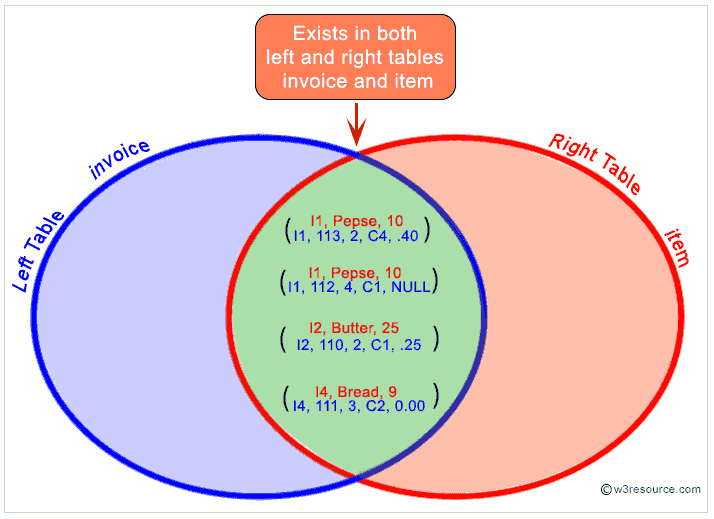

It would look like this animal_breed(animal_breed_id,animal_id,breed_id). Under the ideal design you would do the following.Ģ.Make animal look like something like animal(animal_id,animal_name).ģ.Add a new animal_breed table. When you see repeated property types on an entity, in your case breedID and breed2ID you should typically start to smell something rotten in all but a very few rare cases. Through this simple design you have actually made your life more difficult.
POSTGRESQL LEFT INNER JOIN HOW TO
In this tutorial, you have learned how to select data from multiple tables by using the PostgreSQL INNER JOIN clause.While Ivan has solved your issue for your current database design a long term consideration or just a thing to learn from would be to make your table design more normalized so that having to add a new join every time you want to add a breed to an animal is not necessary. To join more than three tables, you apply the same technique. To join the three tables, you place the second INNER JOIN clause after the first INNER JOIN clause as the following query: SELECT

POSTGRESQL LEFT INNER JOIN CODE
ORDER BY payment_date Code language: SQL (Structured Query Language) ( sql ) 2) Using PostgreSQL INNER JOIN to join three tables Since both tables have the same customer_id column, you can use the USING syntax: SELECT

However, it uses table aliases: SELECTĬ.customer_id = 2 Code language: SQL (Structured Query Language) ( sql ) The following query returns the same result. ORDER BY payment_date Code language: SQL (Structured Query Language) ( sql )

ON payment.customer_id = customer.customer_id The following statement uses the INNER JOIN clause to select data from both tables: SELECT The customer_id column establishes the relationship between the two tables. However, each payment belongs to one and only one customer. In these tables, whenever a customer makes a payment, a new row is inserted into the payment table.Įach customer may have zero or many payments. Let’s take a look at the customerand paymenttables in the sample database. 1) Using PostgreSQL INNER JOIN to join two tables Let’s take some examples of using the INNER JOIN clause. In practice, you will use table aliases to assign the joined tables short names to make the query more readable. To avoid the error, you need to qualify these columns fully using the following syntax: table_name. If you reference columns with the same name from different tables in a query, you will get an error. Most of the time, the tables that you want to join will have columns with the same name e.g., id column like customer_id. The following Venn diagram illustrates how INNER JOIN clause works. In case these values are not equal, the inner join just ignores them and moves to the next row.If these values are equal, the inner join creates a new row that contains all columns of both tables and adds it to the result set.Third, specify the second table (table B) in the INNER JOIN clause and provide a join condition after the ON keyword.įor each row in the table A, inner join compares the value in the pka column with the value in the fka column of every row in the table B:.Second, specify the main table i.e., table A in the FROM clause.First, specify columns from both tables that you want to select data in the SELECT clause.To join table A with the table B, you follow these steps: INNER JOIN B ON pka = fka Code language: SQL (Structured Query Language) ( sql ) To select data from both tables, you use the INNER JOIN clause in the SELECT statement as follows: SELECT


 0 kommentar(er)
0 kommentar(er)
